Literary Criticism: Aristotle onwards
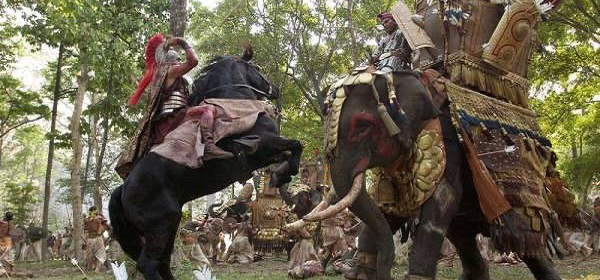
Literary Criticism: Aristotle onwards
by bunpeiris
I bumped into a pile of second-hand books causing one of the books to be swept off the pile. It was a dusty, discoloured & dog-eared book titled “Classical criticism“. I wasn’t interested in literary criticism at all then. I was too young to digest the serious stuff; furthermore I felt falling short of the level of language that could have eased myself
into the content. But the dusty book was dirt cheap; I had a madness, a habit of collecting books, after my father, for I knew one day in the future, I would be merrily reading those, with my legs up on a desk. I bought the second-hand book without a second thought. Until then the copies of the ancient masterpieces that have fallen onto my hands were Mahawamsa, The Mahabharata ,The Iliad, The Odyssey and The Aeneid. But then, those were Sinhalese translations of epic poems and history. This was neither history nor epic poem. What intrigued me was the names of the authors: Aristotle, Horace and Longinus. Translated with an intoduction by one T.S. Dorsch. Somwhere in the middle of the book, it said ” (The rest is lost). One more puzzle to me: what does it mean?
Now, old good Aristotle was known to me, of course not personally, but by his fame. And then who were other two? Aristotle was the tutor of my first foreign hero, the Alexander the Great, whose hero, in turn, was none other than my fictional hero Achilles of The Iliad, himself. And The Iliad, The Mahabharata and The Odyssey were my favourite epic poems: those transported me to other worlds. Somedays I would have one of those under my pillow as Alexander is said to have done with Iliad; other days, another one under the bedsheet, another day another one under the mattress, or even under the bed on bare floor, in line with the way I fell asleep, but not very often on my desk or bookrack.
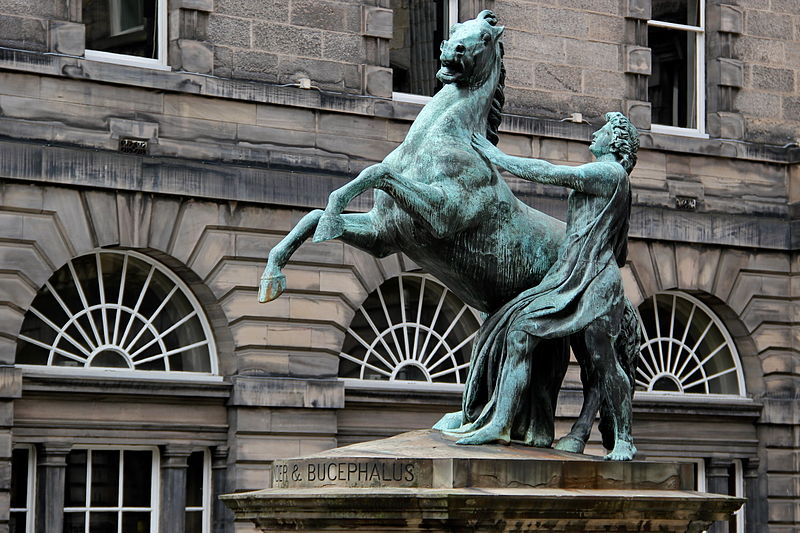
A statue by John Steell showing Alexander taming Bucephalus
Mahawamsa, The Mahabharata ,The Iliad, The Odyssey and The Aeneid in Sinhalese translations, were then, in my preteen years, my bread, my toast, my butter, my half-boiled egg, my sugar, in the morning following a night of nightmares. Life was easy: with a natural flair for wristy strokemaking [even the beamers were pulled away with utter disdain] & whippy fast bowling in a game of softball cricket all the times till the tennis ball split at school playground and in neighbourhood in the shades of mango trees; with my workhorse mother [five children] at home to cane me for I never knew not for what, and my father returning home by 7pm, to listen to my complaints against my hardworking mother [my younger brother Ramal was her favourite child, among all five of us – I didn’t give a shit about that, immersed in novels, epic poems and history, I took it on the stride, but made a note, which unfortuately would last long]; with a walking distance to the school, Prince of Wales’ College, Moratuwa, over the bridge, through the stretch of low grassland on the eastern bank of the Bolgoda lagoon; but nightmares were maddeningly scary. In my nightmares, I would suffer with silent skyfalls with colossal heavy loads of immense vacuüm. Were those nightmares caused by some inner turmoil of mine over some allegedly or viewed/seen as an unfair treatment by someone dear? Or were they signals or premonitions on an exceedingly unfair hand dealt by the heavens or the tragedy that would befall on me, as it turned out, out of the blues, a couple of decades later? I had already heard of Greek tragedies too. But then this was Literary Criticism which I wasn’t keen at all. But then a question began to simmer in my mind: Had the Greeks already sunk in a worthy habit of making documents on commentaries upon their epic poems, even in those ancient times? The only literary commentaries that I have heard then was “tika” [Ceylon’s Rosetta Stone found by George Turner at Mulkirigala (Mulgirigala) rock cave temple in 1827, the prose key (commentaries) to our own Mahawamsa, the”Great Chronicle” of the glorius history of Sri Lanka].
I thought Classical criticism was some profound subject; I only wanted stories that would make me entertained and drive me dizzy, if not mad.
My father would narrate 1001 Arabian nights in the dark ghostly nights of power failures in that large rented house: nobody dared to rent it, all at Lakshapatiya, Moratuwa believed the ghost of the prominent civil servant, Sam De Silva, who was murdered there [bloody murders in Moratuwa were not uncommon then] was in, out, over, above, under and around. But my mother, a real tough cookie, stayed defiant to the toe. And my father said, he never met him, as if he wanted to have a shot of Arrack with the goddamned ghost, so either we were too young to understand what a ghost was or my parents made five of us kids at ease amidst the drops of bloody bricks by the exceedingly careless relatives referring to the ghost.
My father, with just a glance at the book, was very quick to say, much to my astonishment, the Greeks had already formulated literary theories to help us dig deep into the works of literature in those ancient days. Aristotle, their greatest philosopher was leading the pack of literary wolves, forever hungry in knowledge, he added. I knew nothing of literary theories nor philosophy then. How did my fahter know for he was a technical , or rather, an electronic hand, to be precise. But then he was of some all round knowledge: an encyclopedia on two legs. I was marooned scratching my head: Allah!, Saamie, Saamie, Lord Murugan, Santa Maria, Nina, Pinta Captain General Christopher bloody Columbus, Sweet Jesus, Joseph and Mary, it was all too confusing. Until then, to me, Aristotle was no more than the tutor to my first overseas hero, King Alexander the Great.
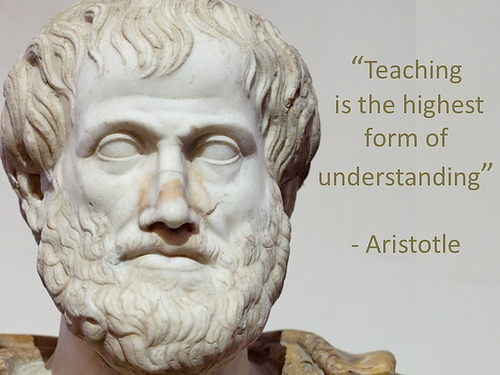
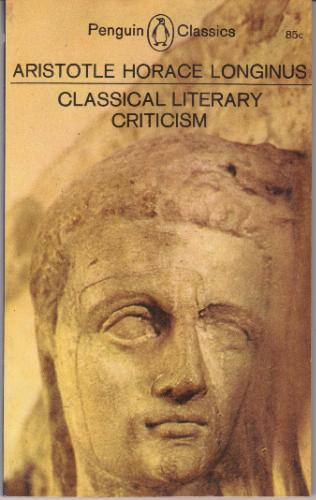
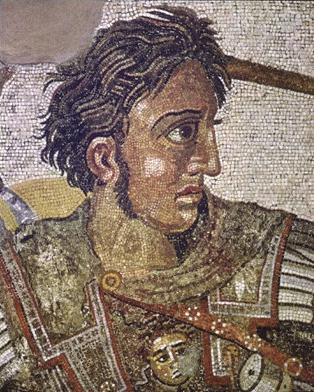
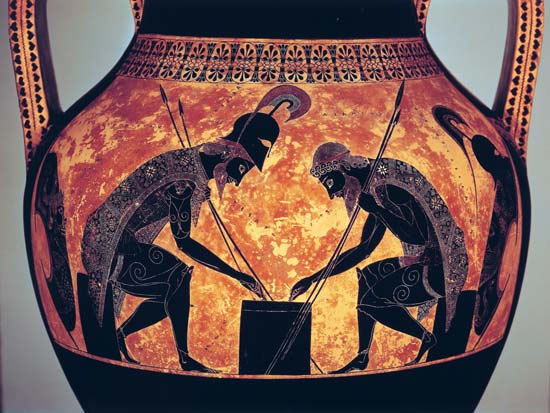
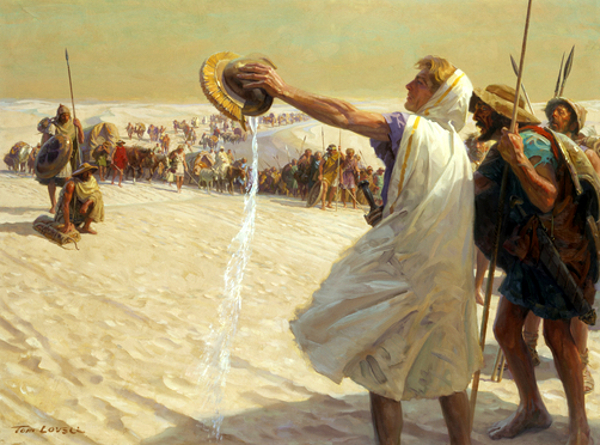
Alexander refuses water: If my warriors die in thirst in this desert, I too would die with them.
| Classical Literary Criticism: Poetics Ars Poetica/On the Sublime by Aristotle, Horace, Longinus, T.S. Dorsch
Aristotle‘s Poetics has long been recognized as a seminal work of literary criticism. His analysis of tragic drama, epic poetry and stylistic devices such as metaphor, and his famous notion of the cathartic purging of the emotions,[1] have defined a critical terminology for generations of later writers. In the Ars Poetica, Horace defends the civilizing power of poetry and the fundamental importance of the principle decorum, while the anonymous author of the treatise On the Sublime (who was formerly erroneously thought to be Longinus) stresses the innate ability required to produce poetry of sublime grandeur ISBN13: 9780140441550
The Greek philosopher Aristotle [384 – 322 BC] composed as many as two hundred treatises, from which approximately thirty one are extant. His writings touch on a broad range of topics including metaphysics, logic, ethics, politics, physics, biology, and aesthetics, comprising what some historians call the first comprehensive system of Western philosophy. Born in Northern Greece, he moved to Athens at the age of 18 to become a student at Plato’s Academy, to which he remained associated until Plato’s death in 347 BC.
|
| A Hero for the Hero Athens, during the era of Plato and Aristotle was the Olympus of Greek culture. Athenians, who took great pride in their refinement in drama enacted at the theaters such as Dionysus, epic poems sung in temples such as Temple of Apollo at Delos, sophistication in cosmopolitan life & concepts of democracy, looked down upon the pastoral Macedonia ruled by King Philip, who they despised as a barbarian. But then, as the destiny would have it, Aristotle, the greatest philosopher of cosmopolitan Athens, was persuaded, in 343 BC, by King Philip to come to Macedonia to become a tutor to just one boy: his son, Alexander. Aristotle brought in, with him, a bounty: The Iliad. Alexander was overwhelmed with the words and deeds of Achilles, the hero of the decade long epic war. Wherever Achilles was, the victory in battle was assured, for he led from the front. Aristotle was instrumental in infusing Prince Alexander, among other matters, with the courage and integrity of Achilles, the ferocious storming-flame of the Greeks. Young Alexander, the teen-age tamer of Bucephalus [2], found his hero: he wouldn’t sleep without having the Iliad under his pillow. In no time, Alexander took a leaf from Achilles: leading in the front, with courage bordering sheer madness. He spared no opportunity to set himself inflamed with the passions of Achilles – in war, in love, in the call of duty, in everything under the heavens. Therein Alexander laid the path to emulate Achilles. Alexander, like Achilles was victory in blood, flesh and spirit. |
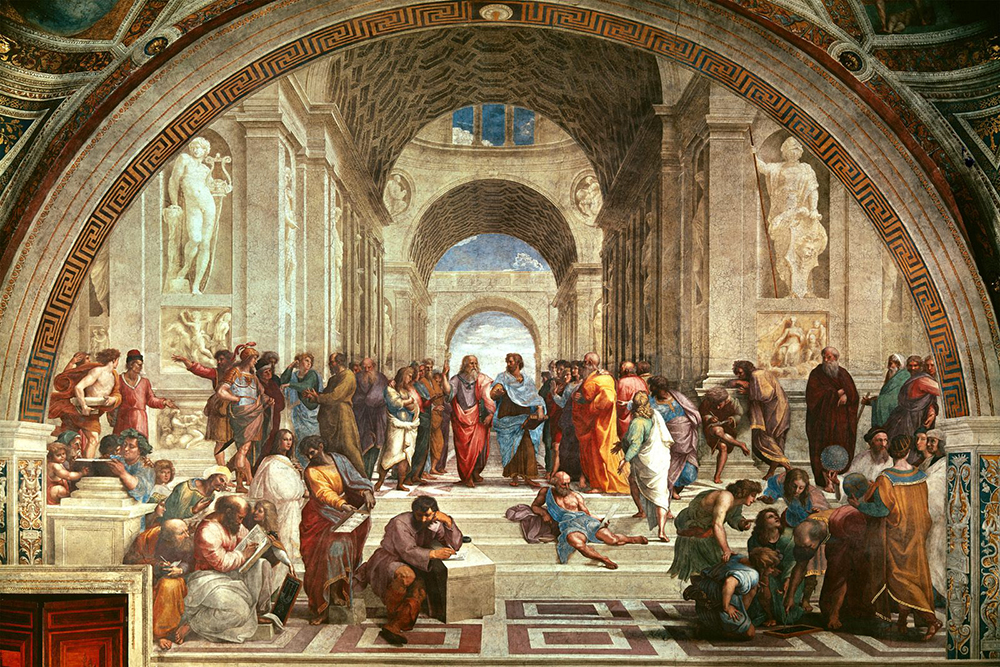
The Greek Thinkers at The School of Athens
In the center of the fresco, at its architecture’s central vanishing point, are the two undisputed main subjects: Plato on the left and Aristotle, his student, on the right. Both figures hold modern (of the time), bound copies of their books in their left hands, while gesturing with their right.
Plato holds Timaeus, Aristotle his Nicomachean Ethics.
Plato is depicted as old, grey, wise-looking, and bare-foot.
By contrast Aristotle, slightly ahead of him, is in mature manhood, handsome, well-shod and dressed with gold, and the youth about them seem to look his way.
In addition, these two central figures gesture along different dimensions:
Plato vertically, upward along the picture-plane, into the beautiful vault above; Aristotle on the horizontal plane at right-angles to the picture-plane (hence in strong foreshortening), initiating a powerful flow of space toward viewers.
It is popularly thought that their gestures indicate central aspects of their philosophies, for Plato, his Theory of Forms, and for Aristotle, his empiricist views, with an emphasis on concrete particulars. Many interpret the painting to show a divergence of the two philosophical schools. Plato argues a sense of timelessness whilst Aristotle looks into the physicality of life and the present realm.
However, Plato‘s Timaeus was, even in the Renaissance, a very influential treatise on the cosmos, whereas Aristotle insisted that the purpose of ethics is “practical” rather than “theoretical” or “speculative”: not knowledge for its own sake, as he considered cosmology to be. Wikipedia [A]
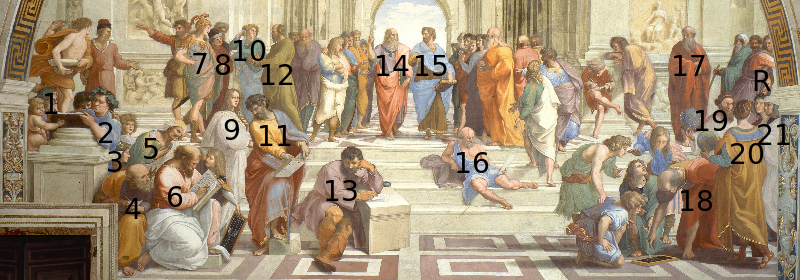
The School of Athens, or Scuola di Atene in Italian, is one of the most famous frescoes by the Italian Renaissance artist Raphael. It was painted between 1509 and 1511 as a part of Raphael’s commission to decorate the rooms now known as the Stanze di Raffaello, in the Apostolic Palace in the Vatican.
The identities of some of the philosophers in the picture, such as Plato or Aristotle, are certain.
Beyond that, identifications of Raphael’s figures have always been hypothetical. To complicate matters, beginning from Vasari’s efforts, some have received multiple identifications, not only as ancients but also as figures contemporary with Raphael. [9]
Luitpold Dussler counts among those who can be identified with some certainty: Plato, Aristotle, Socrates, Pythagoras,[10] Euclid,[11] Ptolemy, Zoroaster, Raphael, Sodoma and Diogenes. Other identifications he holds to be “more or less speculative”.[12]
Who are they? 1: Zeno of Citium 2: Epicurus Possibly, the image of two philosophers, who were typically shown in pairs during the Renaissance: Heraclitus, the “weeping” philosopher, and Democritus, the “laughing” philosopher. 3: unknown (believed to be Raphael)[14] 4: Boethius or Anaximander or Empedocles? 5: Averroes 6: Pythagoras 7: Alcibiades or Alexander the Great? 8: Antisthenes or Xenophon or Timon? 9: Raphael,[14][15][16] Fornarina as a personification of Love[17] orFrancesco Maria della Rovere? 10: Aeschines or Xenophon? 11: Parmenides? (Leonardo da Vinci) 12: Socrates 13: Heraclitus (Michelangelo) 14: Plato (Leonardo da Vinci) 15: Aristotle (Giuliano da Sangallo) 16: Diogenes of Sinope 17: Plotinus (Donatello?) 18: Euclid or Archimedes with students (Bramante?) 19: Strabo orZoroaster? (Baldassare Castiglione) 20: Ptolemy? R: Apelles (Raphael) 21: Protogenes (Il Sodoma, Perugino, or , or Timoteo Viti)[18] Wikipedia [B]
Aristotle, Horace and Longinus
Horace, Latin in full Quintus Horatius Flaccus (born December 65 bc, Venusia,Italy—died Nov. 27, 8 bc, Rome), was an outstanding Latin lyric poet and satirist under the emperor Augustus. The most frequent themes of his Odes and verse Epistles are love, friendship, philosophy, and the art of poetry.
Aristotle, Greek Aristoteles (born 384 bce, Stagira, Chalcidice, Greece—died 322, Chalcis,Euboea), was an ancient Greek philosopher and scientist, one of the greatest intellectual figures of Western history. He was the author of a philosophical and scientific system that became the framework and vehicle for both Christian Scholasticism and medieval Islamic philosophy. Even after the intellectual revolutions of the Renaissance, the Reformation, and the Enlightenment, Aristotelian concepts remained embedded in Western thinking.
Longinus, also called Dionysius Longinus or Pseudo-Longinus (flourished 1st century ad), was the author of On the Sublime (Greek Peri Hypsous), one of the great seminal works of literary criticism. The earliest surviving manuscript, from the 10th century, first printed in 1554, ascribes it to Dionysius Longinus. Later it was noticed that the index to the manuscript read “Dionysius or Longinus.” The problem of authorship embroiled scholars for centuries, attempts being made to identify him with Dionysius of Halicarnassus, Cassius Longinus, Plutarch, and others. The solution has been to name him Pseudo-Longinus.
On the Sublime apparently dates from the 1st century ad, because it was a response to a work of that period by Caecilius of Calacte, a Sicilian rhetorician. About a third of the manuscript is lost. Longinus defines sublimity (Greek hypsos) in literature as “the echo of greatness of spirit,” that is, the moral and imaginative power of the writer that pervades a work. Thus, for the first time greatness in literature is ascribed to qualities innate in the writer rather than in the art.
The author suggests that greatness of thought, if not inborn, may be acquired by emulating great authors such as his models (chief among them Homer, Demosthenes, and Plato). Quotations that were chosen to illustrate the sublime and its opposite occasionally also preserve work that would otherwise now be lost—e.g., one of Sappho’s odes. Longinus is one of the first Greeks to cite a passage from the Bible (Genesis 1:3–9).
Greek literature, the body of writings in the Greek language, with a continuous history extending from the 1st millennium bc to the present day. From the beginning its writers were Greeks living not only in Greece proper but also in Asia Minor, the Aegean Islands, and Magna Graecia (Sicily and southern Italy). Following the conquests of Alexander the Great, Greek became the common language of the eastern Mediterranean lands and then of the Byzantine Empire. Literature in Greek was produced not only over a much wider area but also by those whose mother tongue was not Greek.
Latin literature, is the body of writings in Latin, primarily produced during the Roman Republic and the Roman Empire, when Latin was a spoken language. When Rome fell, Latin remained the literary language of the Western medieval world until it was superseded by the Romance languages it had generated and by other modern languages. After the Renaissance [3] the writing of Latin was increasingly confined to the narrow limits of certain ecclesiastical and academic publications.
Greek and Latin Originals
A decade later I sat tight and began to read the decades old book, the English translation, indeed. The Penguin edition [the second image of the first composite picture of this webpage] of ‘Classical Literary Criticism‘ was a compendium of the available sections of three essays.[The rest of the manuscripts are lost, somewhere in the history.]
[a] ‘On the Art of Poetry’ by Aristotle [Greek]
[b] ‘On the Art of Poetry’ by Horace [Roman]
[c] ‘On the Sublime’ by Longinus [Greek]
Throughout Antiquity, Greeks and Romans interpreted, analyzed, and evaluated the texts of poets and prose writers.
[a] They formulated ideas about the nature of poetry, its effects, and its function in society.
[b] They also developed theories on the effective composition of prose texts, and they commented on the style of orators, historians, and philosophers.
All these different activities can be summarized in the notion of “ancient literary criticism.” Literary criticism was not a separate discipline in Antiquity. Greek and Roman ideas on what we call “literature” (i.e., poems as well as texts of oratory, history, and philosophy) are found in many different kinds of texts (dialogues, epistles, treatises, commentaries, poems) that were produced in various intellectual contexts. Four of these contexts are relevant, in particular: poetry, philosophy, rhetoric, and scholarship. From its beginnings in the Homeric epics, Greek poetry reflected on its own nature, value, and function.
Latin poetry was concerned with similar issues: Horace’s Ars Poetica is both a poem and one of the most influential texts of ancient criticism. Throughout Antiquity, poetry provoked all kinds of responses from philosophers.
On the one hand, the relationship between poetry and philosophy was framed in terms of a conflict between competing traditions: Xenophanes notoriously objects to the poets’ presentation of gods, and Plato problematizes the mimetic nature of poetry in his Republic.
On the other hand, philosophers made extensive use of poetic forms and developed theories of poetry: no critical text from Antiquity has been so influential as Aristotle’s Poetics. Rhetoric is another ancient discipline that is closely connected with literary criticism. In Greek and Roman teaching, students were continuously stimulated to read, study, and analyze the classical texts from the past, which formed the models of stylistic imitation and emulation.By consequence, the rhetorical treatises composed by such teachers as Demetrius, Dionysius, and Quintilian include numerous evaluative observations on specific passages of classical prose and poetry.
Finally, there is the tradition of ancient scholarship that came to flourish in the Hellenistic period, most famously in Alexandria and Pergamum. The commentaries of Alexandrian scholars contained observations on literary (stylistic) aspects of the classical texts, which partly and indirectly survive in collections of scholia. Casper C. de Jonge, (2014)
‘On the Art of Poetry’ by Aristotle
The introduction to his work by Aristotle alone suffice to enlighten us of the sophistication of the analytical mind of this ancient Greek.
Poetry as Imitation
Under the general heading of the art of poetry, I propose not only
to speak about this art itself,
but also to discuss the various kinds of poetry and their characteristic functions,
the types of plot-structure that are required if a poem is to succeed,
the number and nature of its constituent parts,
and similarly any others matters that may be relevant to a study of this kind.
I shall begin in the natural way, that is, by going back to first principles.
Epic and tragic poetry , comedy too, dithyrambic poetry, and most music composed for the flute and the lyre, can all be described in general things, or in representing them in entirely different ways. [Aristotle]
Origin of literary criticism
In search of the origins of literary criticism, the scholars have traversed back in the history to Aristotle. Nevertheless the origins of itinerary criticism, as the term is understood in modern times, didn’t come into being in the ancient times of Aristotle, any more than epic poetry came into being with the Homeric poems or English poetry with Chaucer [4]
A very rudimentary form of literary criticism may perhaps be discerned already in Homer and Hesiod, both of whom regard poetry as the product of divine inspiration;
for Homer its function is to give pleasure.
for Hesiod to give instruction, to pass on the message breathed into the poet by the Muse.
A possible deficiency of a teacher of English Literature upto the 1970.
The consensus that held the subject of teaching & learning English literature during the three decades of 1930s to the 1960s rested upon the demarcations of the human liberalism, i.e.
[a] close reading of text isolated from history/context as proposed by I.A. Richards‘ ”Practical Criticism” [1929]
[b] scrutiny of literature is independent from language studies, historical considerations, philosophical consideration as proposed by F. R. & Q. D. Leavis [1930s].
The whole thrust of the subject is laid therein.
As such, those who read English during the decades of 1930s to 1960s could be of limited knowledge of theory about literature laid out in Greek works on literary criticism
But then, the those who read English in the 1980s would have gained a deeper knowledge of the literary criticism as outlined by the Greeks beginning with Aristotle. The reason: it was in the 1980s that began the holistic approach to literature that assimilated Aristotle’s approach to literature together with other literary approaches.
The Transition to ‘theory’
The growth of critical theory in the post-war period seems to comprise a series of ‘waves’, each associated with a specific decade, and all aimed against the liberal humanist consensus established during the 1930s & 1950s.
During the 1960s two other approaches, which were first introduced in 1930s were reborn.
[a] Marxist criticism
[b] psychoanalytic criticism
Furthermore 1960s witnessed a direct assault on liberal humanism in the earler part of the decade & feminist criticism in the latter part of the decade.
Then, in the 1970s structuralism and post-structuralism of French origin made waves in UK & USA causing a crisis or ‘civil war’ in the discipline of English.
Holistic approach to literature in the 1980s.
In the 1980s a shift occurred which is sometimes called the turn to history, whereby history, politics, and context were reinstated at the centre of the literary-critical agenda. Thus, in the early 1980s two new forms of political/historical criticism emerged, new historicism from the United States and cultural materialism from Britain. Both these take what might be called a holistic approach to literature, aiming to integrate literary and historical study while at the same time maintaining some of the insights of the structuralists and post-structuralists of the previous decade.
Barry, Peter (1995)
General flight from overarching grand explanations
Finally, in the 1990s a general flight from overarching grand explanations seemed to be taking place, and there was what seemed a decisive drift towards dispersal, eclecticism, and special-interest forms of criticism and theory. Barry, Peter (1995)
The results of approaches in 1980s & 1990s.
[a] The idea of universally applicable Marxist explanations were rejected by the approach
known as post-colonialism
[b] Emphasis is made on separateness or otherness of post-imperial nations and peoples
[c] The uniquely fragmented nature of much contemporary experience was brought into the limelight by postmodernism
[e] A loose federation known as gender studies with gay and lesbian texts emerged as distinct fields of literature.
[f] The gender studies implied and generated appropriate and distinct critical approaches such as black feminist (or womanist) criticism.
In the light of above development, it can be safely deduced, those who have read literature in the 1990s enjoy a definite advantage in the learning/teaching process of the literature.
Critical theory, in fact, long predates the literary criticism of individual works. The earliest work of theory of was Aristotle’s Poetics (4th century BC), which, in spite of its title, is about the nature of literature itself;
Aristotle offers famous definitions of tragedy,
insists that literature is about character,
and that character is revealed through action,
and he tries to identify the required stages in the process of a plot.
Aristotle was also the first critic to develop a ‘reader-centered’ approach to literature, since his his consideration of drama tried to describe how it affected the audience.
The Common bedrock of critical theory
In spite of these contrasting approaches having their own traditions and histories, several ideas are recurrent in the critical theory. In this backdrop, it makes some sense to speak of ‘theory’ as if it were a single entity with a set of underlying beliefs, as long as we are aware that doing so is a simplification. Some of the recurrent underlying ideas of theory are as follows.
Aristotle wanted your sympathy or empathy invoked
“I feel your pain”: the genuine version in fiction
Americans loves to say “I feel your pain”. Nobody can feel your pain, my suffering. It’s all your own or my own.
Tragedy, Aristotle said, should, stimulate
the emotions of pity and fear,
these being, roughly, sympathy for and
empathy with the plight of the protagonist.
By the combinations of these emotions came about the effect Aristotle called ‘catharsis’
whereby these emotions are exercised, rather than exorcised, as the audience identifies with the plight of the central character.
Sir Philip Sidney wanted you entetained
Com’on let dance
According to Sir Philip Sidney
[a] Primary aim of literature: give pleasure to the reader
[b] Secondary aim: any moral or didactic element
Significance to the reader then
In a religious age, deeply suspicious of all forms of fiction, poetry, and representation, and always likely to denounce them as the work of devil, this was a very great step to take.
The first prestigious name in English writing about literature’s that of Sir Philip Sidney, who wrote his ‘Apology for Poetry’ in about 1580. Sidney was intent on expanding the implications of the ancient definition of literature first formulated by the Latin poet Ovid [43 BC- AD17], who had said that its mission is ‘docere delictendo’- to teach by delighting (meaning, approximately, by entertaining).
Sidney also quotes Horace (65-8 BC), to the effect that a poem is ‘speaking picture, with this end, to teach and delight’. Thus, the giving of pleasure is here allowed a central position in the reading of literature, unlike, say, philosophy, which ins implicitly stigmatised as worthy and uplifting, but not much fun.
The notion of literature giving pleasure will now seem an unremarkable sentiment, but Sidney’s aim was the revolutionary one of distinguishing literature from other forms of writing, on the grounds that uniquely, literature has as its primary aim the giving of pleasure to the reader.
The First commentary on the work of a single author
Samuel Johnson’s lives of the Poets and Prefaces to Shakespeare can be seen both as another major step forward in critical theory, and as the start of the English tradition of practical criticism, since he is the first to offer detailed commentary on the work of a single author.
Prior to Johnson, the only text which had been subjected to this intrinsic scrutiny was the Bible, and the equivalent sacred books of other religions. The extension of this practice to works other than those thought to be the direct product of divine inspiration marks a significant movement of progress in the development of secular humanism.
A major burgeoning of crtical thoery
After Johnson came a major burgeoning of critical theory in the work of Romantic poets: Wordsworth, Coleridge, Keats, and Shelly. One of the main texts is Wordsworth’s Preface to Lyrical Ballads.
[i] Lyricall Ballads
The book blends high literature and popular literature, since it contains literary ballads constructed on the model of the oral ballads of the ordinary people.
The original readers of Lyrical Ballads also dislike the abandonment of the conventions of verbal decorum. These conventions had imposed a high degree of artificiality on poetic language, making it as different as possible from the language of ordinary everyday speech. Thus, a specialized poetic vocabulary had tended to enjoin the avoidance of simple everyday terms for things, and an elaborate system of rhyme and a highly compressed form of grammar had produced a verbal texture of much greater density than that of ordinary language.
Suddenly, two ambitious young poets were trying to make their poetic language as much as like prose as possible, avoiding the conventions of diction and verbal structure which had held sway for so long.
This book is one of a number of significant critical works in literary theory whose immediate aims are
[a] to provide a rationale for critics’ own poetic work, and
[b] to educate the audience for it.
[c] to forge a relationship between poetic language and ‘ordinary’ language, and
[d] to forge a relationship between ‘literature’ and other kinds of writing
Significant features
[a] choose incidents and situations from common life, and to relate or describe them, throughout, as far as was possible
[b] in a selection of language really used by men, and,
[c] at the same time, to throw over them a certain colouring of imagination,
[d] whereby ordinary things should be presented to the mind in an unusual aspect;
[e] and, further, and above all, to make these incidents and situations interesting by tracing in them, truly though not ostentatiously, the primary laws of our nature: chiefly, as far as regards the manner in which we associate ideas in a state of excitement.
[f] humble and rustic life was generally chosen, because, in that condition, the essential passions of the heart find a better soil in which they can attain their maturity, are less under restraint, and speak a plainer and more emphatic language; because in that condition of life our elementary feelings coexist in a state of greater simplicity, and, consequently, may be more accurately contemplated, and more forcibly communicated; because the manners of rural life germinate from those elementary feelings, and, from the necessary character of rural occupations, are more easily comprehended, and are more durable; and, lastly, because in that condition the passions of men are incorporated with the beautiful and permanent forms of nature.
[ii] Samuel Taylor Coleridge’s Biographia Literaria
addresses the ideas contained in Wordsworth’s Preface.
Indeed, in the years during which he and Coleridge had drifted apart as friends, they had also taken radically different views about the nature of poetry.
Coleridge came to disagree completely with the view that the language of poetry must strive to become more like the language of prose. He saw this as impoverishment of the poetic effect which must ultimately prove suicidal.
Wordsworth argument dovetails well with Aristotle & Sidney
If poetry, unlike other kinds of writing, aims to teach by entertaining it can only be done through the language in which it is written. The language entertain by its ‘fictive’ qualities-this is the source of the aesthetic effect. Something like this is also connoted in Shelly’s A Defence of Poetry [1821], which sees poetry as aesthetically engaged in what a group of twentieth-century Russian critics later called ‘defamiliarisation’.
Shelly anticipates this term, since for him poetry strips the veil of familiarity from the world… it purges from our inward sight the film of familiarity from the world…. It compels us to feel that which we perceive, and to imagine tha which we know’. This remarkable critical document also anticipates T. S. Eliot’s notion of impersonality [put forward in his 1919 essay ‘Tradition and the Individual Talent’] whereby there is a distinction between [as we might call it]
the author [who is the person behind the work] and
the writer [ who is, so to speak, the ‘person’ in the work].
In Eliot’s view , the greater the separation between the tow the better, since ‘the more perfect the artist, the more completely separate in him will be the man who suffers and the mind which creates’, so that poetry is not simply the conscious rendering of personal experience into words. Shelley registers all this a hundred years earlier in his characteristically magisterial prose:
the mind in creation is as fading coal, which some invisible influence, like an inconsistent wind, awakens to transitory brightness; this power arises from within, like the colour of a flower which fades and changes as it is developed, and the conscious portions of our natures are unprophetic either of its approach or of its departure.
[ A Defence, line 999-1003]
Freudien notion
There is also an anticipation of Freudian notion of the mind as made up of conscious and unconscious elements. Indeed, the idea of the unconscious is an essential one in Romanticism, and implicit in everything written about poetry by another major Romanticist, John Keats. Keats did not write formal literary theory in the way Wordsworth, Coleridge, and Shelly did, but he did reflect on poetry in a sustained way in his letters.
He too formulates a notion of the working of unconscious, for instance in a letter to Bailey of 22 November 1817 when he speaks of how ‘the simple imaginative Mind may have its rewards in the repetition of its own silent Working coming continually on the Spirit with a fine suddenness’.
The ‘silent working’ of the mind is the unconscious &
the ‘spirit’ into which it erupts is the conscious.
Keats idea of ‘negative capability’ also amounts to this same privilege
‘when a man is capable of being in uncertainties, mysteries, doubts without any irritable reaching after fact
Notes
[1] Catharsis
The effect of ‘purgation’ or ‘purification’ achieved by tragic drama, according to Aristotle’s argument in his Poetics [4th century BCE].
Aristotle wrote that a tragedy should succeed ‘in arousing pity and fear in such a way as to accomplish a catharsis of such emotions’.
There has been much dispute about his meaning, but Aristotle seems to be rejecting Plato’s hostile view of poetry as an unhealthy emotional stimulant. His metaphor of emotional cleansing has been read as a solution to the puzzle of audiences’ pleasure or relief in witnessing the disturbing events enacted in tragedies.
Another interpretation is that it is the protagonist’s guilt that is purged, rather than the audience’s feeling of terror.
[2] Massive creature with a massive head, Bucephalus is described as having a black coat with a large white star on his brow. He is also supposed to have had a “wall eye” (blue eye), and his breeding was that of the “best Thessalian strain” of horses.
[3] Humanism, term freely applied to a variety of beliefs, methods, and philosophies that place central emphasis on the human realm. Most frequently, however, the term is used with reference to a system of education and mode of inquiry that developed in northern Italy during the 13th and 14th centuries and later spread through continental Europe and England. Alternately known as Renaissance humanism, this program was so broadly and profoundly influential that it is one of the chief reasons why the Renaissance is viewed as a distinct historical period.
In contrast to the medieval scholastic mode, which focused on resolving contradictions between authors, humanists would study ancient texts in the original, and appraise them through a combination of reasoning and empirical evidence. Humanist education was based on the programme of ‘Studia Humanitatis’, that being the study of five humanities: poetry, grammar, history, moral philosophy and rhetoric.
Although historians have sometimes struggled to define humanism precisely, most have settled on “a middle of the road definition… the movement to recover, interpret, and assimilate the language, literature, learning and values of ancient Greece and Rome”. Above all, humanists asserted “the genius of man … the unique and extraordinary ability of the human mind”.
Humanist scholars shaped the intellectual landscape throughout the early modern period. Political philosophers such as Niccolo Machiavelli and Thomas More revived the ideas of Greek and Roman thinkers, and applied them in critiques of contemporary government. Pico della Mirandola wrote what is often considered the manifesto of the Renaissance, a vibrant defence of thinking, the Oration on the Dignity of Man.
[A] & [B]
https://en.wikipedia.org/wiki/The_School_of_Athens
[4] Geoffrey Chaucer, (born c. 1342/43, London?, England—died October 25, 1400, London), the outstanding English poet before Shakespeare and “the first finder of our language.” His The Canterbury Tales ranks as one of the greatest poetic works in English. He also contributed importantly in the second half of the 14th century to the management of public affairs as courtier, diplomat, and civil servant. In that career he was trusted and aided by three successive kings—Edward III, Richard II, and Henry IV. But it is his avocation—the writing of poetry—for which he is remembered.
Perhaps the chief characteristics of Chaucer’s works are their variety in subject matter, genre, tone, and style and in the complexities presented concerning the human pursuit of a sensible existence. Yet his writings also consistently reflect an all-pervasive humour combined with serious and tolerant consideration of important philosophical questions. From his writings Chaucer emerges as poet of love, both earthly and divine, whose presentations range from lustful cuckoldry to spiritual union with God. Thereby, they regularly lead the reader to speculation about man’s relation both to his fellows and to his Maker, while simultaneously providing delightfully entertaining views of the frailties and follies, as well as the nobility, of mankind.
Works Cited
Book: Barry, Peter. Beginning Theory, New York, Manchester University Press, 2009 Print
Book: de Jonge, Casper C.: Ancient Literary Criticism
